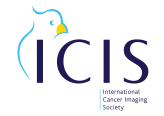Cancer Imaging publishes its first articles with BioMed Central

We are pleased to announce that CANCER IMAGING is now published by BioMed Central, thereby enhanced with the full benefits of open access.
As official journal of ICIS and with an impact factor of 1.59, Cancer Imaging is now an OPEN ACCESS, peer-reviewed journal publishing original articles, as well as reviews and editorials written by international imaging experts with a subspecialty focus on oncology.
The journal encompasses CT, MRI, ultrasound, single photon and positron emission tomography, including multi modality imaging in all kinds of malignant tumours, plus new developments, techniques and innovations. All articles published in Cancer Imaging are included in PubMed, the most widely used biomedical bibliographic database, as well as Embase, EmCare, Google Scholar, MEDLINE, Science Creation Index and Scopus. The full text of all research articles is deposited in PubMed Central, the US National Library of Medicine's full-text repository of life science literature.
Registration for Cancer Imaging on the BioMed Central site is completely free. As a registered user you can:
- Get published – Submit your manuscript to a BioMed Central journal
- Save time – Set up and save stored searches and alerts
- Keep up to date – The latest articles delivered straight to your inbox
- Interact – Respond to articles and post your comments
Submit your next manuscript to Cancer Imaging! For more details click here
Cancer Imaging Launch Articles
Hicks - Cancer Imaging: Quo vadis?
Tweet
